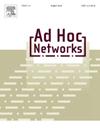A hybrid and self-adaptive QoS and QoE-driven RAT selection strategy for IoT devices
IF 4.4
3区 计算机科学
Q1 COMPUTER SCIENCE, INFORMATION SYSTEMS
引用次数: 0
Abstract
In recent years, the Internet of Things (IoT) has witnessed an explosion, which enables new applications based on connecting numerous devices to the Internet. However, the increasing number of IoT devices utilizing various Radio Access Technologies (RATs), each with distinct communication requirements, presents significant challenges in ensuring reliable Quality of Service (QoS) in such a heterogeneous, multi-technology, multi-user, and multi-application environment. Therefore, for a proper RAT selection, this paper proposes a novel hybrid and adaptive approach based on Deep Reinforcement Learning (DRL) that combines QoS and Quality of Experience (QoE) factors. Unlike previous research, our approach integrates QoS parameters and an adaptive network trust factor that reflects the user's QoE based on reliable past device experiences, ultimately providing users with consistently better connectivity. Within our framework, an IoT device dynamically selects its RAT in a distributed manner based on service requirements and the trust score it assigns to RATs, reflecting its satisfaction with past RAT behavior. The proposed hybrid and adaptive RAT selection approach meets QoS requirements, for various applications at any time as indicated by simulations run using Network Simulator 3 (NS3). Compared to other methods, the energy consumption was reduced by 64.12%, network handovers were decreased by 37.73%, while the average packet delivery ratio was improved by 17.85%. This demonstrates the effectiveness of the proposed approach in optimizing both energy efficiency and network performance, ensuring a more reliable and sustainable system for IoT applications.
求助全文
约1分钟内获得全文
求助全文
来源期刊

Ad Hoc Networks
工程技术-电信学
CiteScore
10.20
自引率
4.20%
发文量
131
审稿时长
4.8 months
期刊介绍:
The Ad Hoc Networks is an international and archival journal providing a publication vehicle for complete coverage of all topics of interest to those involved in ad hoc and sensor networking areas. The Ad Hoc Networks considers original, high quality and unpublished contributions addressing all aspects of ad hoc and sensor networks. Specific areas of interest include, but are not limited to:
Mobile and Wireless Ad Hoc Networks
Sensor Networks
Wireless Local and Personal Area Networks
Home Networks
Ad Hoc Networks of Autonomous Intelligent Systems
Novel Architectures for Ad Hoc and Sensor Networks
Self-organizing Network Architectures and Protocols
Transport Layer Protocols
Routing protocols (unicast, multicast, geocast, etc.)
Media Access Control Techniques
Error Control Schemes
Power-Aware, Low-Power and Energy-Efficient Designs
Synchronization and Scheduling Issues
Mobility Management
Mobility-Tolerant Communication Protocols
Location Tracking and Location-based Services
Resource and Information Management
Security and Fault-Tolerance Issues
Hardware and Software Platforms, Systems, and Testbeds
Experimental and Prototype Results
Quality-of-Service Issues
Cross-Layer Interactions
Scalability Issues
Performance Analysis and Simulation of Protocols.
 求助内容:
求助内容: 应助结果提醒方式:
应助结果提醒方式:


